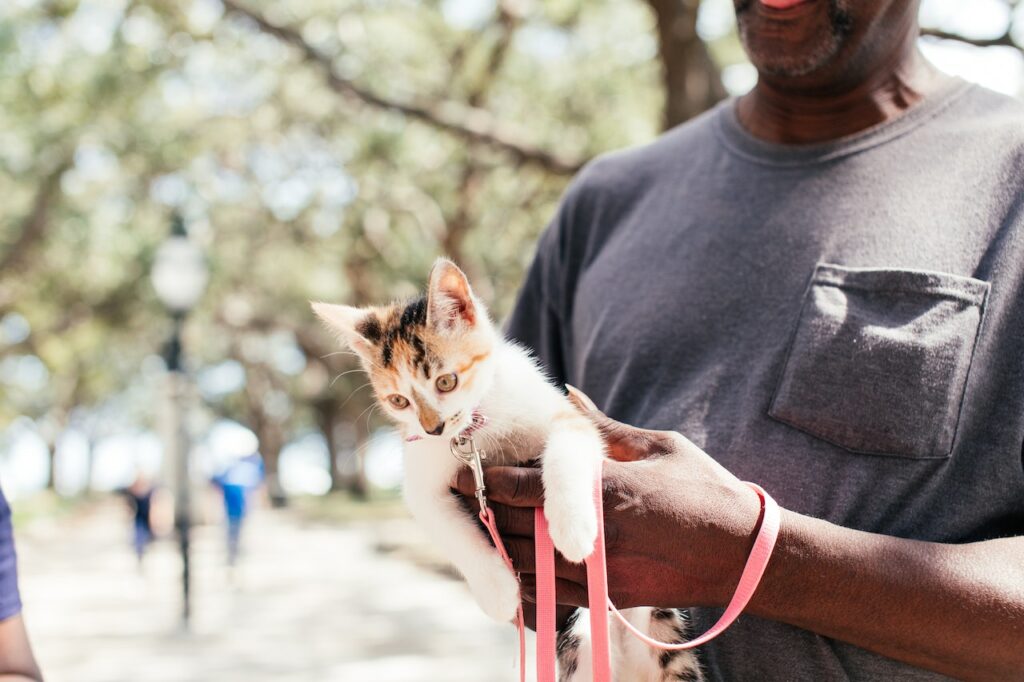How to Safely Harness Train Your Cat – Essential Tips and Tricks
Do you want your cat to explore the world beyond its four walls safely and securely? Harness training is a great way to accomplish this. It’s not just for dogs anymore. Cats can benefit from harness training too! This article will discuss harnesses that are best suited for cats, how to introduce harness training, tips on how to get your cat used to the harness and leash, and why harness training is important for cats. So if you’re ready to expand your kitty’s horizons safely – read on!
How to Safely Harness Train Your Cat – Essential Tips and Tricks
Harness training your cat can be difficult, but with the right guidance and patience, you can have a safely trained cat in no time. With harness training, you will help create a strong bond between you and your pet while allowing them to explore the world outside their home. This article will provide essential tips and tricks to train your cat safely.
What is Harness Training?
Harness training involves teaching your cat how to walk on a leash while wearing restraints, such as a collar or soft mesh harness. This training helps keep your feline friend safe when venturing outdoors. It allows them to stay close when walking, allowing owners more control. It can benefit cats who are anxious around other pets or people, as it keeps them safe from potential danger.
Benefits of Harness Training
Many benefits come with harness training your cat. It allows them to explore the outdoors and teaches proper leash manners. It can also increase communication between cats and humans. Furthermore, it gives cats an outlet for their energy levels by stimulating them during outdoor walks. Finally, owners who take their cats out on regular walks may find their cats become less destructive inside the house due to increased exercise levels from going out for walks.
Essential Steps For Harness Training
Harness training requires consistency and patience for it to be successful, so here are some key steps to follow:
- Start Slow: Start by introducing your cat gradually to the idea of wearing the harness in stages before taking them out on longer excursions.
- Use Positive Reinforcement: Reward behaviours that you want more of, such as when they willingly put on the harness or if they don’t pull too much while walking with treats or toys as rewards.
- Take Breaks: Make sure to pause every few minutes during walks so your cat can adjust and feel comfortable in the new environment before continuing.
- Be Patient: If your cat begins displaying signs of stress or anxiety during any stage, make sure you take a break before continuing onwards once they are relaxed.
Tips for Walking Outdoors With Your Cat
- Supervise Your Cat: Always ensure that you remain vigilant while walking with your cat outside to protect yourself and your pet from any potential danger, such as cars or wildlife, that could harm them if not monitored carefully enough.
- Pick Safe Routes To Walk On: Research areas ahead of time to know which routes are free from traffic so that you and your cat can enjoy a stroll together without worrying about potential dangers.
Supplies Necessary For Harness Training A Cat
- A Comfortable Harness: Make sure that whatever type of harness you decide on is comfortable enough for extended periods of wear since this will be necessary during most outings with your pet outside the house. Look for adjustable straps and breathable materials such as cotton or nylon fabrics, depending on what material feels best against their skin since this will ensure comfort throughout each walk together!
- Retractable Leash: Investing in retractable leashes can allow owners more control over their pet’s movements while still giving cats room to roam around freely within predetermined boundaries.
Conclusion
Harness training is essential in helping create a stronger bond between you and your feline friend while allowing them safer exploration opportunities outside their home environment; however, certain guidelines and supplies are necessary when beginning this process, which must be followed closely in order for success within said endeavour! With patience and guidance, anyone can successfully train their pet safely but always remember that safety should remain a top priority when working with animals under one’s care. This means being mindful of potential hazards like traffic or wildlife at all times, even if one believes themselves able enough!
If you’re harness-training your cat and taking them out on regular walks, ensure they’re protected with the right pet insurance policy. Furrr.co.uk offers a range of policies to suit different needs and lifestyle situations, so don’t hesitate to get your pet covered today! With easy payment options, a quick claims process and an










